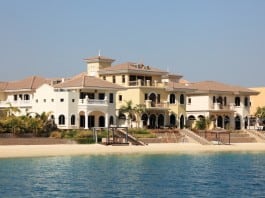Away from the rental market, the value of villas across Abu Dhabi’s residential investment submarkets fell by 1.4% in the 12 months to the end of Q1 2016. This decline pushed the average price of Abu Dhabi villas to approximately AED 1,250 psf. Apartment prices remained largely unchanged in Q1 2016 but despite this there has been further compression in the annual growth rate, which has slipped to 0.8% from 1.1% at the end of 2015.
Carnegy continued: “The deflation in residential values reflects growing caution in the market, which is being compounded by low levels of demand.”
OFFICE MARKET
In the office market, Cluttons research shows that after a year of stability in office rents across Abu Dhabi, they have now begun to slip in more secondary and tertiary locations, while some previously resilient Grade A schemes have also begun to experience rent declines. Average Grade A rents remained unchanged at AED 2,000 psm in Q1 2016, while more secondary (AED 1,200 psm) and tertiary stock (AED 800 psm) experienced average rent falls of AED 100 psm, marking the first decline in almost 18 months.
Faisal Durrani, Head of Research at Cluttons said: “Despite the stability at the top end of the market, a handful of prominent Grade A developments registered downward rental movement during the first three months of 2016. For example, rents at World Trade Centre Tower were reduced by 8%. This reflects landlords’ acceptance of the challenging operating environment and it is these landlords that are likely to be best placed when growth eventually returns.
“Positively, the limited availability of the Grade A office market in Abu Dhabi in comparison to Dubai has in part aided the market’s ability to withstand the oil price shock and the ensuing slowdown in business activity; however as is the case with the residential sector, the atmosphere in the office market is increasingly cautious.”
According to the report, in addition to the ongoing trickle of completions, office space is also being returned to the market by oil and gas firms, which is fuelling a supply-demand imbalance.
“It is our expectation that further average office rent falls of around 5% to 7% are likely before the year is out, in addition to a raft of lease incentives, unless oil prices stage a major comeback; however this appears unlikely at this stage. The recycling of space through consolidation activity is something we’re keeping an eye on as the supply-demand imbalance may well widen further this year, exacerbating the quieter conditions now bedding in. There will of course be exceptions to our forecast, with centrally located, well managed buildings expected to buck this trend, particularly if the rents are perceived to offer good value,” Durrani concluded.












